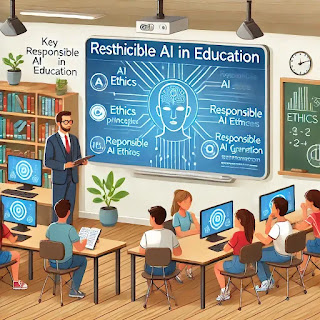AI Practice for Teacher Candidates: Day 60 — Understanding AI Bias in Education
Welcome to Day 60 of the 100-Day Journey!
AI is a powerful tool in education, but it must be used ethically. Today, we’ll explore AI bias—how it happens, why it matters, and how teachers can ensure fair and responsible AI integration in their classrooms.
Why Is AI Bias Important in Education?
- Prevents Unfair Outcomes: AI algorithms can unintentionally favor certain groups, leading to inequality.
- Encourages Critical Thinking: Teaching students to recognize bias builds digital literacy.
- Ensures Ethical AI Use: Educators play a key role in promoting responsible AI practices.
Common Causes of AI Bias
- Biased Training Data – AI learns from past data, which may reflect existing inequalities.
- Lack of Representation – AI models may not include diverse perspectives.
- Algorithmic Misinterpretation – AI may make incorrect assumptions about students.
- Unintentional Reinforcement – AI-powered grading or recommendations may favor certain learning styles.
AI Tools to Teach Ethical AI Use
-
AI Bias Testing Platforms
- Tool Example: AI Fairness 360 (IBM), Google’s What-If Tool.
- Use Case: Analyze AI decision-making and identify possible biases.
-
Critical Thinking with AI
- Tool Example: ChatGPT, Bard AI.
- Use Case: Generate different AI responses to the same question and analyze for bias.
-
AI and Media Literacy
- Tool Example: FactCheck Explorer, NewsGuard AI.
- Use Case: Teach students to evaluate AI-generated content for accuracy and bias.
-
Ethical AI Simulations
- Tool Example: MIT Moral Machine, AI4ALL.
- Use Case: Explore ethical dilemmas related to AI decision-making.
Practical Task: AI Bias Exploration
-
Discuss AI Bias Examples
- Use AI-generated texts or images and ask students to identify any patterns of bias.
-
Test AI Fairness
- Use the Google What-If Tool to explore how different inputs affect AI decisions.
-
Create Ethical AI Guidelines
- Have students draft a list of ethical guidelines for using AI in education.
-
Debate AI Ethics Scenarios
- Assign different roles (teacher, student, developer) and discuss AI’s role in fairness.
Reflection Questions
- What surprised you about AI bias in education?
- How can teachers ensure AI tools are used fairly in the classroom?
- What steps can schools take to promote ethical AI integration?
Pro Tip: Model AI Literacy
When using AI in the classroom, be transparent about its limitations and discuss ethical concerns openly with students.
Looking Ahead
Tomorrow, we’ll explore how to teach students about ethical AI use, helping them become responsible digital citizens.
You’re fostering responsible AI awareness—keep up the great work! See you on Day 61! 🤖✨
